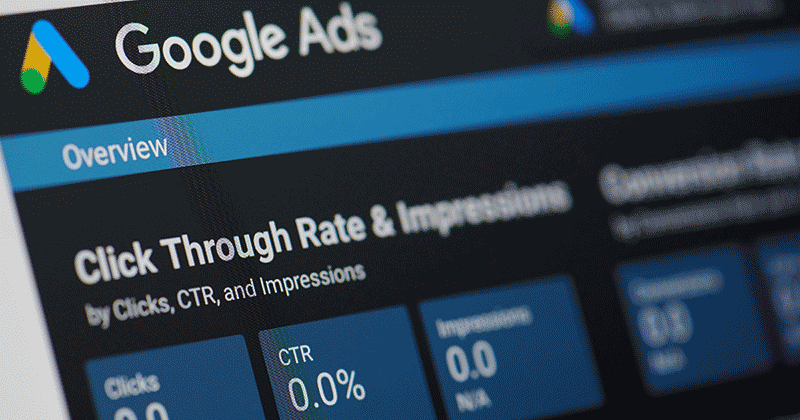Personalization, User Data & Search
I heard a rumor that there was thing called "lunch" right before this session started but I don’t know anything about that. Lunch is for sissies.
Okay, so the jazzy music has now stopped and Chris Sherman is up moderating this afternoon’s session with speakers Jonathan Mendez (OTTO Digital), Richard Zwicky (Enquisite), Dave Davies (Beanstalk Search Engine Positioning), Gord Hotchkiss (Enquiro), Tim Mayer (Yahoo) and Sepandar Kamvar (Google). Let’s do it.
Up first is Gord Hotchkiss to talk about how personalization can impact the user experience.
What will drive personalization? User volunteered info, search history, Web history, community choices, task context, geo targeting, platform info, origin of search. Basically lots and lots of stuff!
Does personalization work? Gord put together a panel and tracked the clickstream data, personalizing listings 3, 4, and 5. Did it work? The answer is yes. The percent of time spent increased, as did the percentage of fixations and the percentage of clicks. Even if users didn’t click on the personalized results, it drew the eye in and kept them there longer. Personalization works when it’s relevant.
Danny Sullivan once commented that the fear with personalized results was that if the natural results are getting better and better, why would someone want to click on the ads anyway? That didn’t seem to be a problem according to Gord’s research. When users invested in the page, it draws them down the page and makes them want to explore. It forces them to expand their attention over the entire page.
Gord asks the question everyone wants to know – how will personalization affect search engine optimization and search marketing?
In the old world of search engine optimization, SEO strategies were all keyword based. We looked at keywords and how algorithms developed the best sites for those keywords. The whole strategy revolved around key terms
According to Gord, that is going to change. When personalization takes hold the game becomes a lot more user-centered. There are more things determining ranking and they’re all based on users — things like search history, current tasks, Web history, social patterns, etc.
We’re going to see search engine optimization happen around themes. Long tail optimization will become more important. SEOs will start optimizing around content buckets where understanding user behavior will be vital. User-centric development will finally take hold. Emerging "buzz sites" will be a new search engine optimization tactic.
As we look at personalization, site stickiness will be move up towards the top of the funnel. Site will have to become more research based. We’re going to see content aggregation, and comparison wizards and more mashups.
Gord says that we’re going to see a handful of sites or specific content emerge for each theme. He calls it a "circle of importance". Think about the search engine optimization industry and look at our incestuous little circle.
We’re also going to see an emergence of clickstream based intelligence tools. Engines will introduce more profiling tools.
What search may look like in 2010?
Gord shows a horribly ugly image as to what search may look like. It’s basically an iGoogle page with search results thrown right on it, complete with sponsored links, heavily personalized organic results, a Google Map, sponsored video and lots of other really ugly things. Let’s hope that never happens.
Up next is Richard Zwicky.
Analytics in personalization allows you to see the forest in the trees. Wow. Deep.
Personalization is when search results are changed based on your preferences, right? But what if you’ve never searched for something before? Whose preferences are shaping your results? Other people. People like Susan. [Not me, I opt out of that nonsense –Susan]
What’s beyond personalization?
-Regionalized results
-Regional Differences
-Search Engine Optimization for the New World Of Search.
Search engines are using regional results to get you the right information. For example, if you’re in Boston and you’re looking for clam chowder recipes, you probably don’t want recipes that include tomatoes so Google will make sure you don’t see them. (Seriously? Do the engines really filter results that way??)
Richard talks a lot how the engines are filtering the results based on regional differences. He explains how a searcher in New York and a searcher in Seattle will get two different set of results for the same query.
Why does it matter? It matters because in most instances search marketers are trying to target them the same way and failing. They don’t understand that you need to optimize for traffic in different areas and build out accordingly. Think about how dynamic language is. You can’t optimize the same nationally, regionally and locally. You have to know your customers and know what they’re typing.
You optimize for this by first researching the market. Know what terms are going to show up in different regions. Consider buying pay per click ads before using the terms in your organic search engine optimization campaign. It’s easier to do A/B testing this way. If you’re doing the work in house, get consultants to help and to keep the knowledge base up.
With personalization and regionalization, optimization campaigns need to become more sophisticated. We need better research tools and better reports.
Next up is Dave Davies to talk about patents. Oh no, my head hurts already. I want to cry. No patents. Please?
Here we go discussing user behavior, personal PageRank, Group data and influencing the search engines. *inhales deeply*
User Behavior – Watching what we do. Engines can "watch" user behavior to assess the value of web pages. They’re looking at the clickthrough. The time users take to return to the engine (how long after they visit your site do they go back to Google?) and the type of query. This will all affect your future search results as well as the results of similar searches.
Personal PageRank – Judging your value. Google will be assigning a value to you as a search user. This value will be used to grade your activities on a Web site. (Come again?) This will affect the rankings of sites based on an individual’s activities on that site. Users who are trusted by Google will affect the results to a greater degree than those who are not trusted.
Group Data – Seeing what others see. Membership in common communities, common bookmarks, common search behavior (sites selected and/or behavior on sites once selected). This will affect your future results as well as the results of similar searchers.
Influencing Engines
- The Problems
- Rankings can vary from region to region.
- Rankings can vary from person to person
- Some factors will have little to do with typical search engine optimization.
- The Benefits
- More tailored search results
- The Solutions
- Design for time-on-site and page views, monitor stats and tweak for phrases with low visitor experience levels
- Localize. If you’re after a regional phrase associate yourself with that region through link relationships, Google Maps, content, etc.
- Link out. Associate yourself with authorities and send your vistors out to them rather than back to the engine.
- Attract high PageRank visitors. Sheer numbers and think like a high PageRank searcher.
I just want to make sure you were paying attention – but apparently you get credit for sending users where they can find information and for having important people visit your site. That’s good to know.
Up next is Jonathan Mendez who asks how many people are doing behavioral targeting. Um, okay, not many, apparently.
Jonathan says he’s going to start out with a rant. Huzzah! Yay, Jonathan.
Why is behavioral targeting important to search engine marketers?
- Nothing performs better than targeting to the intentions of users
- SEMs need to step up and get recognized
- CMOs think BT is just display. It’s not.
- Higher search budgets, which equals more brand dollars and bigger salaries (w00t!)
- Everyone wins.
The way to behavioral target is to get parameters passed to you. Here’s the stuff Google is already telling you:
hl = host language
safe = safe search preference
client = browser
rls = results language
g = query
btnG = search interface
Pay per click ads can provide even more parameters. You can set ad groups, ad creative, match types, and parameters based on geotargeting and local. All of this can help you deliver a more personalized experience.
JavaScript tools that deliver rules based on personalized content include Offermatica, Omniture, Kefta, WebTrends, etc.
You want to segment users with very high impact segments because it provides a large data set and even a small lift in conversion rates will have a big impact.
Use data to discover segments and affinities. Decide what would be relevant. Create and Develop. Test and Validate. Then Monitor.
Jonathan ends with a few case studies.
Sepandar Kamvar and Tim Mayer are just here for the Q&A.
Okay, maybe not, they’re both going to say a few words.
Sepandar comments that the biggest impact of search engine optimization is to design and optimize for the user and not just the keyword. It’s a great opportunity for search engine optimization because what you’re doing to draw visitors to your site is the same thing you’re doing to keep them there.
He discusses the importance of building useful gadgets. A lot of personalization works best when your query is underspecified (one word or two word queries). A natural extension of that is trying to give users info without them even having to ask for it. That’s where iGoogle came from. They wanted it to answer the question "what should I be searching for". A lot of the gadgets are along those lines. It’s really important for sites to have good content designed as gadgets.
As part of a search engine optimization campaign don’t think just about bringing users to the search page, but think about how you can distribute the content that you want out there.
Feeling some pressure from Sepandar, Tim also joins the conversation. :)
Tim says Yahoo is focused on using social data in order to personalize. They want to determine what people like. They’re attacking the subjective space (about 30 percent of the queries). They want to know what doctor should I go to, what restaurant, where can I get cool clothing. It’s about leveraging the power of people.
- Becoming the known expert on the Web and in your particular communities.
- Have something unique, something that no one else on the Web has.
- Have fresh content and promote it virally.
- Promote yourself across different services – del.icio.us, Sphinn, Digg, etc.
[Conference Tip From Lisa: Always sit behind the projector when possible. It acts as a nice little heater.]
26,000+ professionals, marketers and SEOs read the Bruce Clay Blog
Subscribe now for free to get:
- Expert SEO insights from the "Father of SEO."
- Proven SEO strategies to optimize website performance.
- SEO advice to earn more website traffic, higher search ranking and increased revenue.

LEAVE A REPLY









